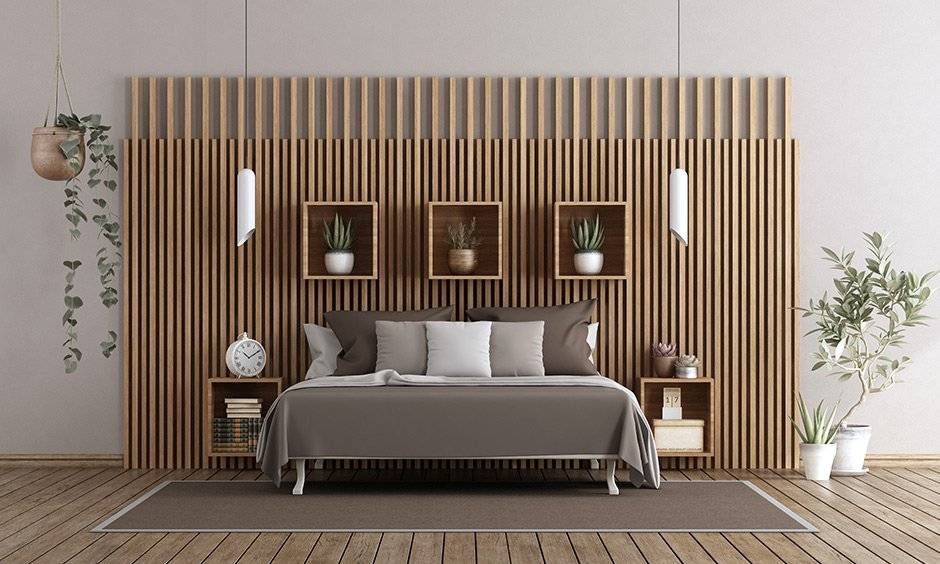Interior design is as much about the subtlety of textures as it is about bold statements. Wall paneling, in particular, has made a striking comeback in modern decor, offering both aesthetics and functional value. Among the most popular options for wall cladding are veneer wall panels and solid wood wall panels. But how do you know which one is right for your space?
In this ultimate comparison, we’ll explore the pros and cons, use cases, cost implications, installation differences, environmental impact, and aesthetic versatility of veneer vs. solid wood wall panels. By the end, you’ll be equipped to make a well-informed choice for your next design project.
What Are Veneer Wall Panels?
Veneer wall panels are created by bonding a thin layer of natural wood (the veneer) onto a core material like MDF (Medium Density Fiberboard), plywood, or particleboard. This allows the panels to look and feel like real wood while being more cost-effective and lightweight.
Key Features:
- Aesthetic similar to solid wood
- Lightweight and easier to install
- More affordable than solid wood
- Wide variety of wood finishes and grains
- Stable and less prone to warping
What Are Solid Wood Wall Panels?
As the name implies, solid wood wall panels are made entirely from natural timber. Each panel is cut and crafted from real wood planks, offering authenticity and a premium look.
Key Features:
- 100% natural wood
- Rich texture and durability
- Can be sanded and refinished multiple times
- Develops a patina over time
- Environmentally pure (if sourced responsibly)
1. Aesthetic Appeal
Both options offer impressive aesthetics, but with different characteristics.
Veneer Wall Panels:
These panels replicate the natural look of wood while allowing for consistent grain patterns. They come in a wide range of finishes—from walnut and oak to exotic species like teak or mahogany. Because veneer is a surface layer, designers can achieve a uniform appearance across a large area.
Solid Wood Panels:
Solid wood is all about authenticity. Each plank is unique in its grain and texture, offering a one-of-a-kind, organic aesthetic. These panels are especially favored in high-end residential or commercial settings where character and heritage are emphasized.
Verdict:
If you want uniformity and design flexibility, choose veneer wall panels. Solid wood wins for a bold, natural look that evolves over time.
2. Durability and Maintenance
Solid Wood Panels:
Highly durable and long-lasting. Solid wood can be sanded down and refinished multiple times, making it ideal for high-traffic areas. However, it’s prone to warping and expansion due to humidity.
Veneer Wall Panels:
While not as robust as solid wood, veneer panels are quite durable when cared for properly. Since they’re mounted on stable cores like MDF, they are less likely to warp or swell. However, deep scratches or gouges may be difficult to repair because the veneer layer is thin.
Verdict:
Solid wood is the best choice for longevity and reparability. Veneer wall panels are preferable for stability in variable climates.
3. Cost and Affordability
Veneer Wall Panels:
Veneers are significantly more budget-friendly. Because they use less actual wood, they offer the look of luxury without the high price tag.
Solid Wood Panels:
The cost is substantially higher due to material, craftsmanship, and weight. Installation is also more expensive because experienced labor is needed.
Verdict:
Veneer wall panels are the clear winner for cost-conscious consumers.
4. Installation and Workability
Veneer Wall Panels:
They are lightweight and easier to handle. They can often be installed by DIYers or with minimal professional help. Prefabricated options further simplify the process.
Solid Wood Panels:
It is heavier and more labor-intensive to install. Due to expansion and contraction, professional installation is highly recommended to accommodate wood movement.
Verdict:
For convenience and speed, veneer wall panels are superior.
5. Environmental Considerations
Solid Wood Panels:
Solid wood is a renewable resource when sourced sustainably. However, it requires the felling of entire trees, which can lead to deforestation if not managed responsibly.
Veneer Wall Panels:
Veneer production uses less wood and maximizes yield from a single log. Many manufacturers also offer eco-friendly options with low-VOC adhesives and sustainable cores.
Verdict:
Veneer wall panels offer a more sustainable choice, provided the core material is eco-certified.
6. Customization and Versatility
Veneer Wall Panels:
Extremely versatile in terms of finish, texture, and even bending capabilities (for curved surfaces). They can be stained, dyed, or printed to match a specific design palette.
Solid Wood Panels:
Limited to the properties of the natural wood species used. While they can be stained or painted, customization is more labor-intensive.
Verdict:
Veneer wall panels offer greater versatility in contemporary interior design.
7. Acoustic and Insulation Properties
Solid Wood Panels:
Thicker and denser, solid wood provides better sound insulation and thermal regulation. It’s an excellent choice for music rooms, libraries, or executive offices.
Veneer Wall Panels:
While still offering decent acoustic properties, they are not as effective as solid wood. However, enhanced acoustic versions are available with specialized cores.
Verdict:
Choose solid wood if acoustic performance is a top priority.
8. Resale and Perceived Value
Solid Wood Panels:
Homes or commercial spaces with solid wood finishes are often seen as more prestigious. The material has a timeless, high-end appeal that can positively influence resale value.
Veneer Wall Panels:
While visually impressive, veneer is often seen as a cost-saving alternative, which may not have the same impact on property value.
Verdict:
Solid wood panels carry a higher prestige factor.
Which One Should You Choose?
| Factor | Veneer Wall Panels | Solid Wood Panels |
|---|---|---|
| Aesthetic Consistency | ✔️ | ❌ |
| Natural Beauty | ❌ | ✔️ |
| Cost | ✔️ | ❌ |
| Durability | ❌ | ✔️ |
| Ease of Installation | ✔️ | ❌ |
| Environmental Impact | ✔️ | ❌ (unless FSC-certified) |
| Versatility | ✔️ | ❌ |
| Sound Insulation | ❌ | ✔️ |
| Resale Value | ❌ | ✔️ |
Final Thoughts:
- Choose veneer wall panels if you want the beauty of wood without the cost, installation hassle, or environmental concerns. They are perfect for modern, budget-conscious, or large-scale commercial applications.
- Opt for solid wood wall panels if you are investing in a timeless, luxury space that prioritizes durability, acoustic performance, and prestige.
Regardless of your choice, both options offer unique advantages that can elevate your interior design to new heights. Your final decision should balance aesthetics, function, budget, and environmental values.






